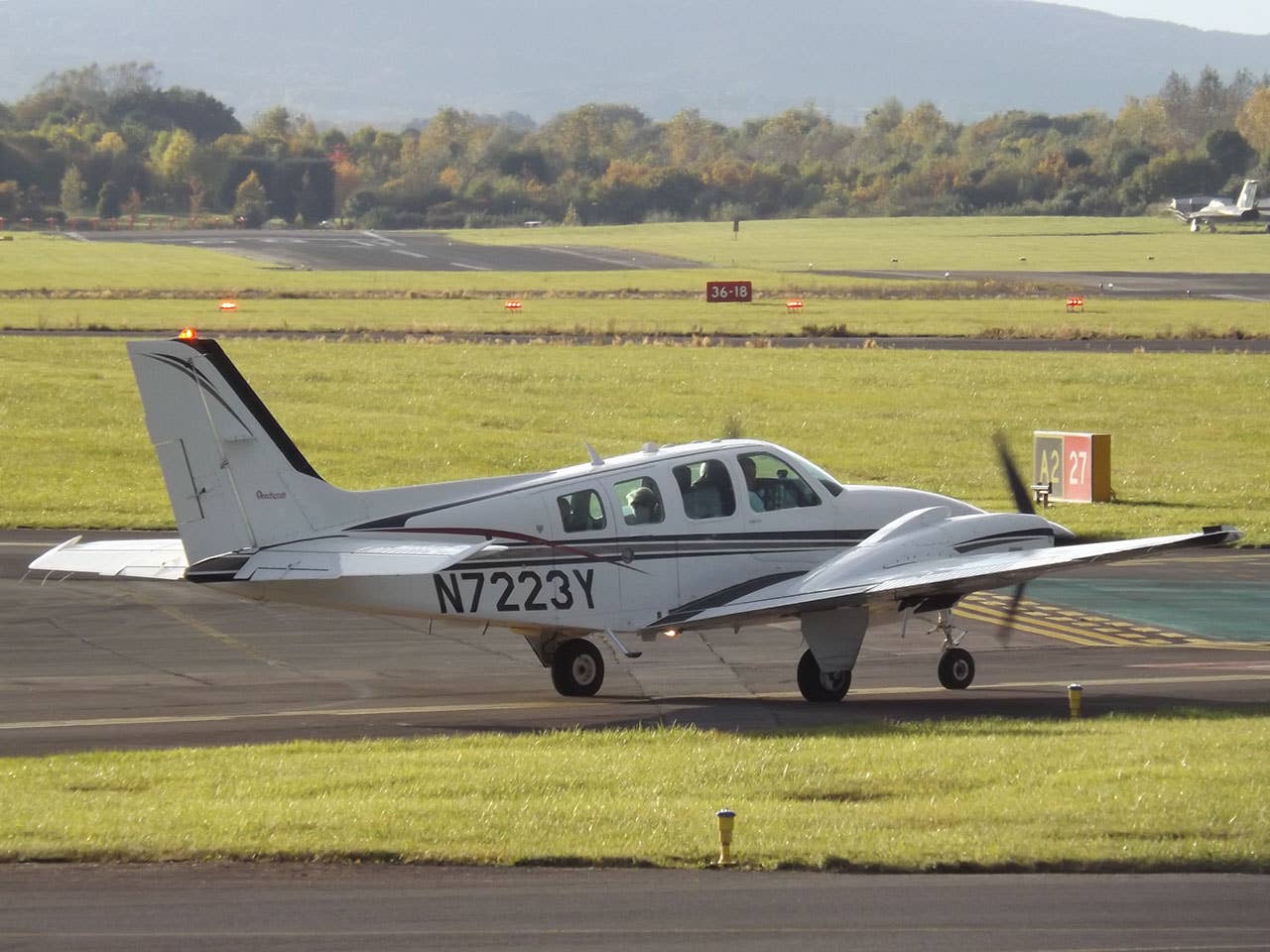Beech‘s Lighter Twins
Notwithstanding its name, the 1950s Beech Twin Bonanza had nothing in common with a Bonanza other than the planform of its outer wing panels. Original seating was Buick-like, three across…

The Beech Model 58 Baron gives lots of room for passengers and bags with good speed and legendary Beechcraft amenities. Photo by James from Cheltenham, Gloucestershire (CC BY-SA 2.0) via Wikimedia Commons
Notwithstanding its name, the 1950s Beech Twin Bonanza had nothing in common with a Bonanza other than the planform of its outer wing panels. Original seating was Buick-like, three across in front and back, boarded by climbing retractable stairs onto the wing and stepping down through a side door. From the cockpit, it's easy to see the T-Bone foundation of the King Air. Unless it is converted, you'll have to accommodate the needs of the geared Lycoming engines that powered all Twin Bonanzas.
Over the years, much has been made of the Beech Twins' out-of-order power quadrant and gear/flaps arrangement. It all began with the 1937 Model 18 Twin Beech; Walter Beech simply copied the layout of contemporary airliners, which had the throttles in the middle, with props on the left and mixtures on the right, so two pilots had equal access to the go-levers. The gear switch was to the right of the quadrant because it was a co-pilot's job to move it. The 1952 Model 50 Twin Bonanza simply followed suit, and so did the Travel Air and Baron that came later. You just learn to deal with it.
By the late 1950s, it was obvious that a Twin Bonanza had become too much airplane for many step-up buyers, so a true Twin Bonanza was needed. In 1958, Beech introduced the Model 95, first called the "Badger" but quickly renamed "Travel Air." To develop it, the Bonanza wing was widened slightly, 180-hp Lycoming engines were mounted on each side, and a big conventional tail from the T-34 military trainer was fitted, leaving the Bonanza's four-seat fuselage essentially intact. With its center-mounted throw-over control column, the instrument panel had to be expanded vertically to accommodate the power levers and extra gauges, with an enlarged fuel selector adjacent to the pilots' knees.
Down the street in Wichita, Cessna had been selling a bunch of its model 310 twins, which featured six-cylinder Continental powerplants, so in 1961, Beech strapped a larger and swept vertical fin onto the Travel Air, mounted 260-hp Continental IO-470s, and created the Model 55 Baron. Ostensibly seating six by shifting baggage into the nose, the Baron was still a Bonanza at heart, but it gave Beech a competitor and was a joy to fly with its increased power. When the Bonanza 36 came along with side doors and six seats in 1968, it was logical to expand the Baron similarly into the 1970 Baron 58, which is still being built. Along the way, Barons have acquired available turbocharging and pressurization, an updated instrument panel arrangement and 300-hp engines. My favorite Baron is still the B55.
With the Travel Air out of production since 1968, Beech Aircraft needed a lighter twin than the burly Baron. The solution was the Duchess, a twin-engine conversion of the Sierra light retractable. The new tee-tailed four-seater with doors on both sides debuted in 1978. Using counter-rotating 180-hp O-360 Lycomings, it did a great job as a trainer and personal runabout, lasting for five years and 437 units of production before Beech ceased production in 1983.
Beyond the Barons, Beech added the pressurized Duke to its line in 1968. It might be considered more of a "heavy light twin" due to its weight and complexity. Purpose-built as an ultimate personal transport for the Beechcraft buyer who was ready for more but maybe not ready for a King Air, it offered airliner amenities and remains highly sought after.

Subscribe to Our Newsletter
Get the latest Plane & Pilot Magazine stories delivered directly to your inbox






